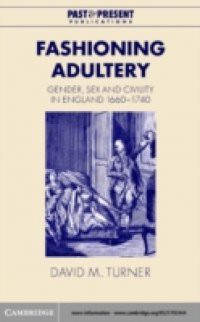This 2002 book provides a major survey of representations of adultery in later seventeenth- and early eighteenth-century England. Bringing together a wide variety of literary and legal sources - including sermons, pamphlets, plays, diaries, periodicals, trial reports and the records of marital litigation - it documents a growing diversity in perceptions of marital infidelity in this period, against the backdrop of an explosion in print culture and a decline in the judicial regulation of sexual immorality. In general terms the book charts and explains a gradual transformation of ideas about extra-marital sex, whereby the powerfully established religious argument that adultery was universally a sin became increasingly open to challenge. The book charts significant developments in the idiom in which sexually transgressive behaviour was discussed, showing how evolving ideas of civility and social refinement and new thinking about gender difference influenced assessments of immoral behaviour.

